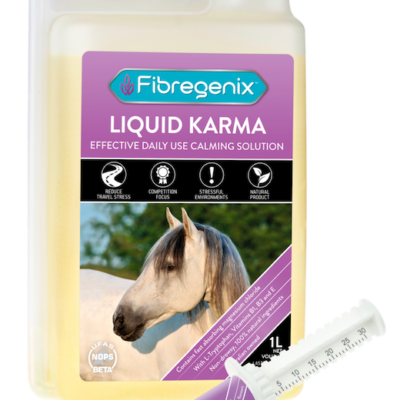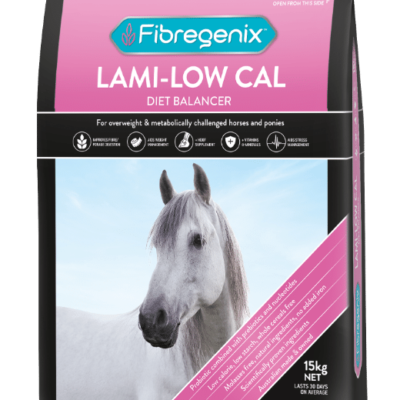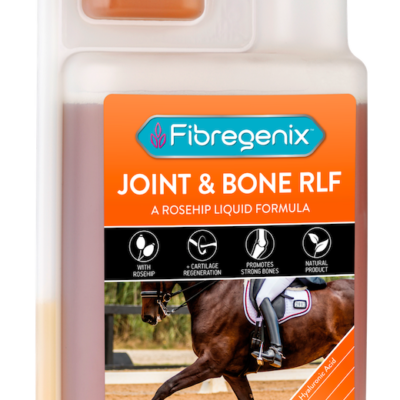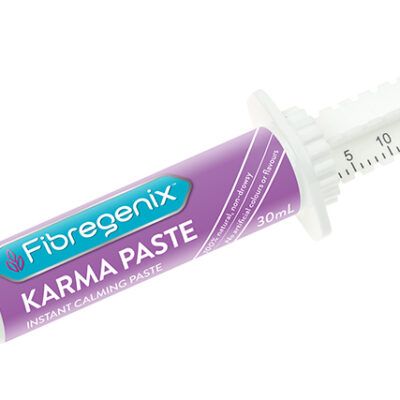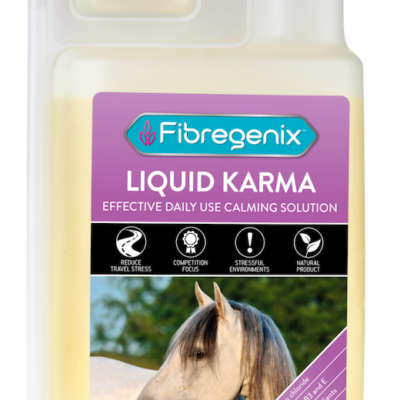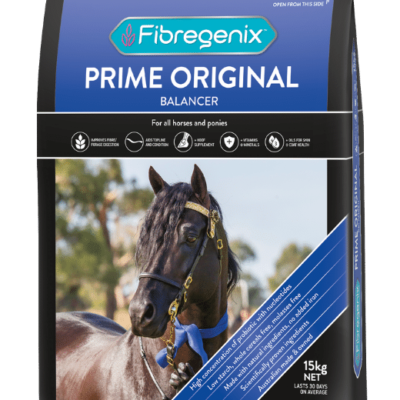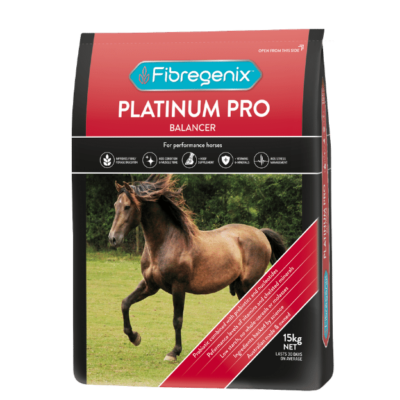Oct 17, 2019
 We all have our own way of doing things and with feeding horses, it’s no different. But have you ever considered why you do what you do and whether it’s actually for the right reasons?
We all have our own way of doing things and with feeding horses, it’s no different. But have you ever considered why you do what you do and whether it’s actually for the right reasons?
I always add chaff or lucerne to my horse’s feed
If your horse is getting ad-lib forage (grass, hay), does he really need extra fibre in his bucket? Half a scoop or so is not providing a significant amount of additional fibre anyway and is merely adding to the overall size of the meal. Since a horse has limited stomach capacity, the overall compound ration should be divided into as many small meals as possible.
However, many of us can only feed twice a day so, if your 500kg horse in light to moderate work needs 3.7kg of commercial compound hard feed (the recommended amount) per day, that’s 1.8kg per feed and will provide potentially too much starch in one feed.
Personally, I would always add in some chaff/fibre if a concentrate (grain or compound feed) is being given because….
it slows down the rate of consumption of the hard feed and promotes more thorough chewing which is better for saliva production. A horse produces far less saliva chowing down a kilo or more of hard feed on its own, as it’s easier for them to eat. This means the gastric acid is not being buffered and too much acidity in the stomach will overwhelm it and can create problems such as ulcers.
Meal Size Guide
Do not exceed a total of 1.6 – 1.8kg per feed for a horse and 1.4 – 1.6kg for a pony (including additional chaff or sugar beet, if fed)
Adding more to it, even fibre, is risking overloading the stomach and feed flowing on into the intestine before it has been properly digested in the stomach. At best this is a waste of feed, at worst it can cause problems when it reaches the hindgut.
Alternative fibre sources can be useful if a horse is a poor forage eater but need to be fed in significant quantities, perhaps in a separate bucket, to replace the fibre the horse is missing out on by not eating forage.
I always add soaked sugar beet pulp to my horse’s feed
Sugar beet pulp is rich in “super fibres”, like hemicellulose and pectin; different from the structural fibre, cellulose, which is abundant in forage. Super fibres are more easily digested than cellulose and yield more energy, so sugar beet pulp is ideal where additional slow-release calories are required but care must be taken with the overall meal size when adding it to other hard feeds (see above).
As far as adding sugar beet as a way of making the meal wet, this can be useful at times, when there’s a risk of the horse dehydrating or not drinking, such as when travelling or at competitions. Normally though, feed shouldn’t need damping if the horse always has access to fresh, clean water. Chewing triggers the horse’s saliva production and the more he chews, the more saliva is produced.
I always feed less than it says on the bag
Feeds are carefully formulated to ensure they deliver all the nutrients and calories a horse requires, alongside forage, within a manageable daily amount. This is calculated according to bodyweight and workload so feeding less could mean a horse misses out on essential nutrients.
If feeding the recommended amount of a compound feed means your horse gets fat or has too much energy, you need to switch to a feed with a lower Digestible Energy (DE) which supplies the required nutrients with fewer calories per scoop. If you still can’t feed what it says on the bag, choose a Fibregenix balancer instead or top up the reduced levels of compound feed with a Fibregenix balancer to ensure your horse receives a fully balanced diet. Balancers, such as Fibregenix Lami Low-Cal, provide essential nutrients, including protein, vitamins and minerals, but minimal calories.
I always feed a hoof supplement
One of the most visible signs that a horse is missing out on essential nutrients, and not receiving a balanced diet, is poor hoof quality. A range of nutrients are necessary for healthy hooves and they include B vitamins, like Biotin, minerals, like zinc and calcium, and amino acids, like methionine. All these should be supplied in the required quantities by the recommended amount of a good quality compound feed or balancer so, if that’s what your horse is getting, you shouldn’t need to add a supplement. It takes 9 to 12 months for new horn to grow from the coronary band to the ground so expecting any improvement in under this time is wishful thinking. Supplementing an already balanced diet is a waste of money and choosing a product that supplies only Biotin is also not particularly useful since a range of nutrients are necessary.
I feed a chaff with added vitamins and minerals to my laminitis-prone pony but don’t actually feed the amount it says on the bag
Just like any complementary compound feed, “chaff-based all-in-one” products are formulated to be fed at certain levels to ensure the horse or pony receives all the nutrients he needs for health and well-being. A scoop here and there may seem like an excellent low-calorie snack, with vitamins and minerals to boot, but will not be providing the recommended daily amount of these essential nutrients so you might as well feed an ordinary low sugar chaff and cut your costs!
A balancer, like Fibregenix Lami Low-Cal, is great for good-doers and those prone to laminitis as it contains essential nutrients, like quality protein, vitamins and minerals, but minimal calories, the bulk of which can be supplied by forage. Fed in small quantities, Lami Low-Cal can give you peace of mind that your horse or pony is receiving the nutritional support he needs whilst you control his calorie/forage intake as necessary. Fibre remains very important to the good-doer, but lower-calorie sources are important, such as coarse, stalky hay as opposed to soft, leafy hay, and controlled access to grazing.
I like to feed a bran mash once a week
Whilst this was once common, it is now considered “bad practice” as it constitutes a sudden change of diet when changes should ideally be made gradually to avoid disrupting the sensitive bacterial population of the horse’s hindgut. Even a “regular” change, ie. a bran mash once a week, is enough to upset the bacterial balance and means the horse’s digestive efficiency is compromised.
Rather than feed a mash when a horse has a day off, reduce the horse’s normal feed by up to half and, if the horse is off work for a while, top the reduced feed up with a Fibregenix balancer, to maintain nutrient levels without the calories, or change to a lower energy feed which can be fed at recommended levels. Modern wheat bran is now devoid of much of the fibre and wheat germ for which it was once valued. Its addition to an already balanced compound ration will unbalance that ration and can upset the calcium: phosphorus ratio which, in turn, can compromise bone tissue formation and integrity, something which is particularly risky in growing youngstock.
I/my horse prefers a muesli mix to a pellet
It’s pretty rare for a horse to have a preference and the vast majority will find pellets equally as palatable as muesli mixes. The ingredients used to make pellets are of the same high quality as those used in muesli mixes but, whilst nutritionally they may be equal, aesthetically to us as humans, muesli will look more palatable. Pellets do have advantages over muesli mixes, particularly for horses with excitable temperaments, since they tend to be lower in starch than their mix equivalent. And, whilst ingredients are of the highest quality, the production process is less costly, so pellets tend to be cheaper! Give it some thought the next time you choose a feed; who are you aiming to please? After all, horses never tire of eating grass!
I need to avoid protein because my horse is fizzy
Riders often worry about protein levels in feed and usually for the wrong reasons, since this nutrient is rarely used by the horse’s body as a source of energy so is unlikely to “heat him up”. Protein is important however, as it supplies essential amino acids which are the building blocks of body tissues, including muscle fibres, so particularly vital for working horses. Since the body’s requirement for protein increases with workload, performance feeds contain more protein and coincidentally more calories, and it is the calories which may affect temperament.
I need to avoid cereals because my horse is fizzy
Having eliminated, or at least identified, any obvious causes of fizzy or fractious behaviour, then consider your horse’s diet. The amount of energy/calories that goes in should equal the amount that he needs for maintenance and work, as any excess will either be laid down as body fat or expressed as excitability or both. For excitable horses who need help maintaining condition, a balancer on its own or alongside a reduced amount of concentrate, plus plenty of good quality, digestible forage is the most effective solution. The important thing with the cereal content is that it must be cooked thoroughly to be as digestible as possible for the horse. Cooking methods like micronising and extruding have now superseded steam flaking as they gelatinise (cook) more of the cereals’ starch content. This reduces the risk of undigested starch reaching the hindgut and causing problems which can include crabby behaviour. Meal sizes must also be kept small for the same reason, whilst forage intake should be a minimum of 1% of body weight to avoid compromising gut function which could lead to colic or gastric ulcers.
Feed manufacturers never suggest that cereals are a replacement for fibre, rather that they are a useful and effective addition to a forage-based diet when fed correctly. Harder working horses, need the readily available glucose cereals supply as fuel for the brain and other organs, thus helping to maintain concentration and stamina. There are now feeds available which contain a blend of energy sources, alongside cooked cereals, with an emphasis on slower release energy, if required. Pellets also tend to be lower in starch than their muesli equivalent so are ideal for the fizzy type.
Whilst your horse may calm down on reduced quantities of a cheap, low energy mix, or on no complementary feed at all, consider his overall condition, health and well-being and whether this is likely to be sustainable as work-load or the demands of performance increase. Many horses “perk up” when their overall plane of nutrition is improved, and they start to feel well in themselves; many will settle again when they become accustomed to the feeling of well-being.
Food for Thought
Hopefully, if any of these situations apply to you, you will give a little thought to your reasoning and consider whether you are feeding entirely for your horse’s benefit. There is nothing wrong with keeping feeding simple; plenty of forage and the manufacturer’s recommended quantity of a compound feed or balancer should be all your horse needs. The key is in choosing the right feed for the job and not adding extras to it just for the sake of it. After all, by streamlining your feed room and making things as cost effective as possible you could free up cash to spend on other things!
Oct 16, 2019
 Feed Allergies or Intolerances
Feed Allergies or Intolerances
There’s an increasing awareness of the possibility of feed allergies or intolerances among horses, but how prevalent are they?
Allergies
We know that the human body can have dramatic and potentially drastic reactions to certain foods. However, true feed allergies in horses are relatively rare. Allergies involve the stimulation of the immune system to react excessively against a certain protein or protein-like molecule (allergen). Something that would not normally happen in the non-allergic horse. This reaction results in the release of excess histamines. These can cause symptoms such as sneezing and wheezing, itching, swelling, hives (lumps on the skin) or diarrhoea.
Allergies can be hard to diagnose and in severe cases, a vet will carry out tests with varying degrees of success. Feed allergies can include swelling of the lips and mouth but are more commonly seen as diarrhoea and/or hives. However, symptoms alone are not necessarily indicative of an allergic reaction to something the horse ate.
Intolerances
A more common occurrence are hypersensitive reactions to substances which don’t involve the immune system. These tend to be referred to as intolerances. They can result in many varied symptoms which may not necessarily initially, be attributable to a feed-related issue. As such, they can be equally hard to diagnose. Indeed, it’s only in recent years that intolerances to feeds or feed ingredients have become recognised. So, although there’s a perception they’re becoming increasingly prevalent among equines, it’s more likely we are more aware of their existence.
Symptoms of feed intolerances can include “crabby” or “jumpy” behaviour, hives, dry itchy skin, loose droppings or a tendency to colic. However, these can also be the result of environmental and management issues. Any horse which is uncomfortable in its gut, for example, is likely to be crabby, unsettled and prone to colic. Therefore, eliminating all which could be causing this can help settle the situation. For instance stress is a primary factor in gut discomfort. This can have innumerable causes from insufficient turn-out or bullying in the field to travelling, competing over-zealous training. The list goes on…
Stress
One common consequence of a “stressed-out” equine is EGUS (Equine Gastric Ulcer Syndrome). This occurs as a result of acid attacking the lining of the horse’s stomach. therefore, any horse prone to ulcers or any digestive discomfort MUST have constant access to forage. Not only that, the starch content of any supplementary feed also should preferably be kept to a minimum. The simple provision of ad-lib forage can help reduce stress levels by satisfying a horse’s physiological need to chew. It also ensures there is always some food in the stomach to stop the digestive acid reaching areas it shouldn’t.
A constant flow of fibre through the digestive system also ensures that any gases produced during digestion are carried through. This avoids a build-up which could cause colic. Fibre from forage is also essential to maintain a healthy population of gut bacteria which are instrumental in digestion. An imbalance can not only affect digestive efficiency but gut pH (acidity). Gut imbalance symptoms can include, loose droppings, diarrhoea or colic.
Digestive Enhancers for Feed Intolerances
Any horses with loose droppings, whether continuously or during times of stress, would benefit from a digestive enhancer. These are usually pro and prebiotics found in Fibregenix balancers. Live yeast Probiotics can be fed to replenish gut bacteria populations which may have been depleted. Prebiotics support the existing populations of beneficial bacteria by acting as a food source and help them flourish.
another function they perform is to disable pathogenic bacteria and facilitate their removal. These actions help maintain a healthy bacterial balance, supporting gut efficiency and helping alleviate loose droppings and discomfort.
Itching
Scurfy or itchy skin can be a sign of a dietary imbalance. Checking the overall balance of the diet should always be taken before giving supplements or special feeds to alleviate specific symptoms. A fully balanced diet, supplying correct levels of essential vitamins and minerals and quality protein, helps support health and well-being. The visual signs of this will include, strong healthy hooves and a shiny coat. Omega 3 fatty acids are essential for soft, supple skin and may be found in a Fibregenix balancer. Alternatively, they can be added to a fully balanced diet in the form of a high oil supplement or straight oil.
Elimination Diets for Feed Allergies or Intolerances
Should problems persist and remain unexplained, then feed allergies or intolerances are possible. But the only way to find out what is causing the reaction is to put the horse on an elimination diet. Whilst this can be difficult for the hard-working horse or poorer-doer, it may be the only option. And it will involve cutting out all supplementary feeds and giving just ad-lib forage for a minimum of four weeks.
By this time, unless the cause is within the pasture or forage, symptoms should have subsided. Other feed ingredients can then be reintroduced one by one until a problem recurs. In that way it can be attributable to what has been added to diet. Your vet or feed nutritionist can help you plan the process and discuss feeds or feed ingredients. You can then decide which you can add separately to aid in the identification of the culprit. It’s entirely possible that the problem is within the horse’s grass, hay or haylage. But this should become apparent if problems persist despite the elimination of the usual suspects in hard feed.
Special Feeds
Elimination diets can be time consuming and complicated to exercise. So there’s an increasing tendency to assume that an intolerance exists and it’s due to one or more commonly implicated ingredients. There are feeds which avoid these ingredients, which offer a potential “quick fix”. Unfortunately, this means that neither the specific cause nor any environmental implications are ever addressed. If an elimination diet results in the recognition of a reaction to a specific ingredient, then such feeds can re-establish a fully balanced diet whilst avoiding intolerance reactions.
Feed ingredients which have been identified as causing hypersensitive reactions include certain cereals, lucerne and molasses. If a horse is truly allergic to any of these, it’s a protein which they contain that will be the actual allergen. The fact remains that oils, starch, cellulose or sugars are not allergens and cannot cause an allergic response.
Bad Press
Sugar often receives bad press which is unwarranted. It is both an essential nutrient and a natural component of the horse’s diet because grass has a high sugar content. Molasses is often perceived to be “high sugar” but is not 100% sugar. It’s what’s left after the sugar has been extracted. It is often used in feeds at an inclusion rate of less than 5%. This means the actual amount of sugar it contributes to a horse’s diet is minimal.
Take Home Message: There’s no doubt that horses can have feed allergies or intolerances to something in their diets. However, there are other factors to consider when presented with potential symptoms. Always ensure your chosen feed products come from a reputable manufacturer as these will contain carefully prepared natural ingredients. They’ll also be backed by meticulous research ensuring they provide the very best and safest nutrition for your horse.
Oct 11, 2019
HOW CAN I TELL WHETHER MY HORSE IS TOO FAT OR TOO THIN?
It can be difficult to accurately describe your horse’s condition as people can have very different perceptions of what constitutes a fat and or thin horse. The most objective way to assess your horse’s condition is to give him a Body Condition Score, which involves looking at and feeling areas of his body to determine levels of body fat. As a rough guide, you should be able to feel a horse’s ribs but not see them, however, there is much more to consider than that! You can also evaluate your horse’s muscle development and top line as well as using a weigh tape or weighbridge to find his bodyweight.
Download here...
Oct 11, 2019
 WHAT IS THE BEST WAY TO HELP A HORSE LOSE WEIGHT?
WHAT IS THE BEST WAY TO HELP A HORSE LOSE WEIGHT?
Like any human, in order to lose weight, a horse needs to burn more calories than he consumes. The dilemma with horses is that they are designed to eat and chew for at least 18 out of every 24 hours and need a constant flow of fibre through the digestive system in order to stay healthy.
Losing weight is tough and it’s even tougher if you’re an animal like the horse that is designed to spend most of its life eating. Stop your horse eating for too long and you may end up with a horse with serious health and behavioural problems – problems far more serious than nipping out in your pyjamas in the middle of the night to buy a chocolate bar! Let him eat though and you could be dealing with laminitis and obesity. Finding the happy medium is what managing a good doer is all about and hopefully the following tips will help you to keep your horse in good shape both mentally and physically.
Confined Quarters
The digestive tract of the horse functions most efficiently when it has an almost constant supply of fibrous material to break down. We are all told to eat more fibre to promote regular and healthy bowel movements and the same applies to the horse. Fibre passing through the digestive tract pushes out any gas bubbles that have formed. If the horse is receiving very little to eat to try and control his weight, then the gas can accumulate, causing the gut to become distended which is very painful and may result in colic symptoms. The other problem with enclosing good doers in a stable with very little to eat is the risk of them developing stereotypies or “stable vices”. As horses are herd animals reducing their contact with other horses can cause considerable anxiety and result in problems. It has previously been assumed that boredom was the main reason horses receiving very little fibre started to develop stereotypies as they had long periods of time doing nothing. However, research is suggesting that in fact, some stereotypies are a response to increased acidity in the digestive tract. When the horse chews he produces saliva, which contains bicarbonate that helps to neutralise the acidity in the gut. If a horse isn’t receiving much fibre, he won’t be spending very long chewing and so the gut may remain very acidic. This is the reason antacids are starting to be promoted for use in horses with stereotypical behaviours.
There are several things you can do to try and reduce the risk of these problems occurring. The most important are the basic rules of feeding. We all think that feeding little and often just relates to the concentrate ration but with good-doers it applies to the forage as well. For example, if your horse is a good doer and you put all its hay in at 4 pm and then don’t return until 8 am the next morning, the chances are that your horse will spend from 4.30 pm until 8 am without anything at all. This is really too long to be without some source of fibre and so if you know someone goes to the yard much later, ask them to put a haynet in when they leave. If there really isn’t anyone else to help then try and put the hay in small holed nets, put several nets inside one another and put several nets around the stable so it takes as long as possible for your horse to extract the hay.
Limited grazing
In the summer when most horses are enjoying lots of time in the field, the poor old good doer has to spend more time in the stable. It is the safest place for the overweight horse to be in terms of avoiding obesity and laminitis, but it does mean that they miss out on a lot of valuable nutrients that grass contains. Although hay and haylage provide an alternative fibre source for the stabled horse, they do not provide as many nutrients as grass and as many people tend not to feed their good-doer at all in the summer, it can mean that they miss out on certain nutrients. There are various ways to provide these nutrients as most manufacturers now have a feed designed for good-doers. One option is to use a low-calorie balancer such as Fibregenix Lami Low-Cal which provide a concentrated source of nutrients without the calories that are found in a normal mix or cube. These are fed in very small quantities and can be fed with a simple, low-calorie white chaff. An alternative option is to use a chaff-based feed that has added nutrients. These are fed in much larger quantities and can be fed alongside or instead of hay. Whichever type of product you choose it is important to feed the levels recommended by the manufacturer or your horse may still not be receiving the nutrient levels it requires.
I just give my horse a handful of a high fibre, low energy feed to keep him happy?
One of the most common feeding strategies employed by owners of overweight horses and ponies is to give a token offering of a high fibre, low energy feed. As these feeds are designed to be fed in much greater quantities, a handful provides very little of the vitamins and minerals the horse needs and some calories that he doesn’t need. The table below shows the differences in nutrient levels provided by a concentrated balancer which is designed to be fed in small amounts, and a handful of a high fibre, low energy pellet feed product which is designed to be fed in much larger amounts.
|
Nutrient
|
Amount provided by 500g of a high fibre, low energy pellet
|
Amount provided by 500g of Lami Low-Cal balancer
|
|
Calcium
|
5.8g
|
12g
|
|
Copper
|
49mg
|
100mg
|
| Zinc |
133.5mg |
250mg
|
I have a lazy, overweight horse. What do I do?
One of the most common problems with good doers is that they also tend to be lazy. Putting more energy in increases the risk of weight gain which can make the laziness worse. The first objective is to try and get some weight off and then think about trying to generate a bit more energy. Quite often, horses feel better and have more energy once the diet has been balanced as their lethargy was due to a lack of nutrients in the diet. The first step is, therefore, to ensure that the diet is balanced. If this doesn’t generate more energy from your horse, then it is possible to combine a low- calorie balancer with oats. Oats are the cereal most often associated with causing lively behaviour in horses and so adding a few to the diet may produce a livelier horse. Combining the oats with a balancer like Lami Low-Cal means that the balancer provides a balanced diet and so the amount of oats can be adjusted according to the horse’s workload and requirements. When the horse isn’t working as hard the amount of oats can be reduced right down to a handful so that extra calories are not being added when they’re not needed. Make sure that if you try adding oats that you introduce them very slowly as they can have quite a strong effect on some horses and ponies. This feeding regime works very well with competition horses, particularly Warmblood dressage horses, as they are often good-doers but still need lots of energy for the work that they do.
Before and After
If you feel that your horse needs to go on a diet then prepare a fitness and diet plan. It is a good idea to keep a record of your horse’s measurements and so get yourself a weigh tape and measure your horse each week – make sure you are consistent when you measure e.g. at the same time of day and with the tape in the same place each time. Take a photo before you start so that you can refer back to it as small changes day by day are hard to see whereas if you look back after a couple of weeks you should be able to see more of a change. If you have implemented a good exercise programme and a suitable diet you should find that the weight starts to come off.
 We all have our own way of doing things and with feeding horses, it’s no different. But have you ever considered why you do what you do and whether it’s actually for the right reasons?
We all have our own way of doing things and with feeding horses, it’s no different. But have you ever considered why you do what you do and whether it’s actually for the right reasons?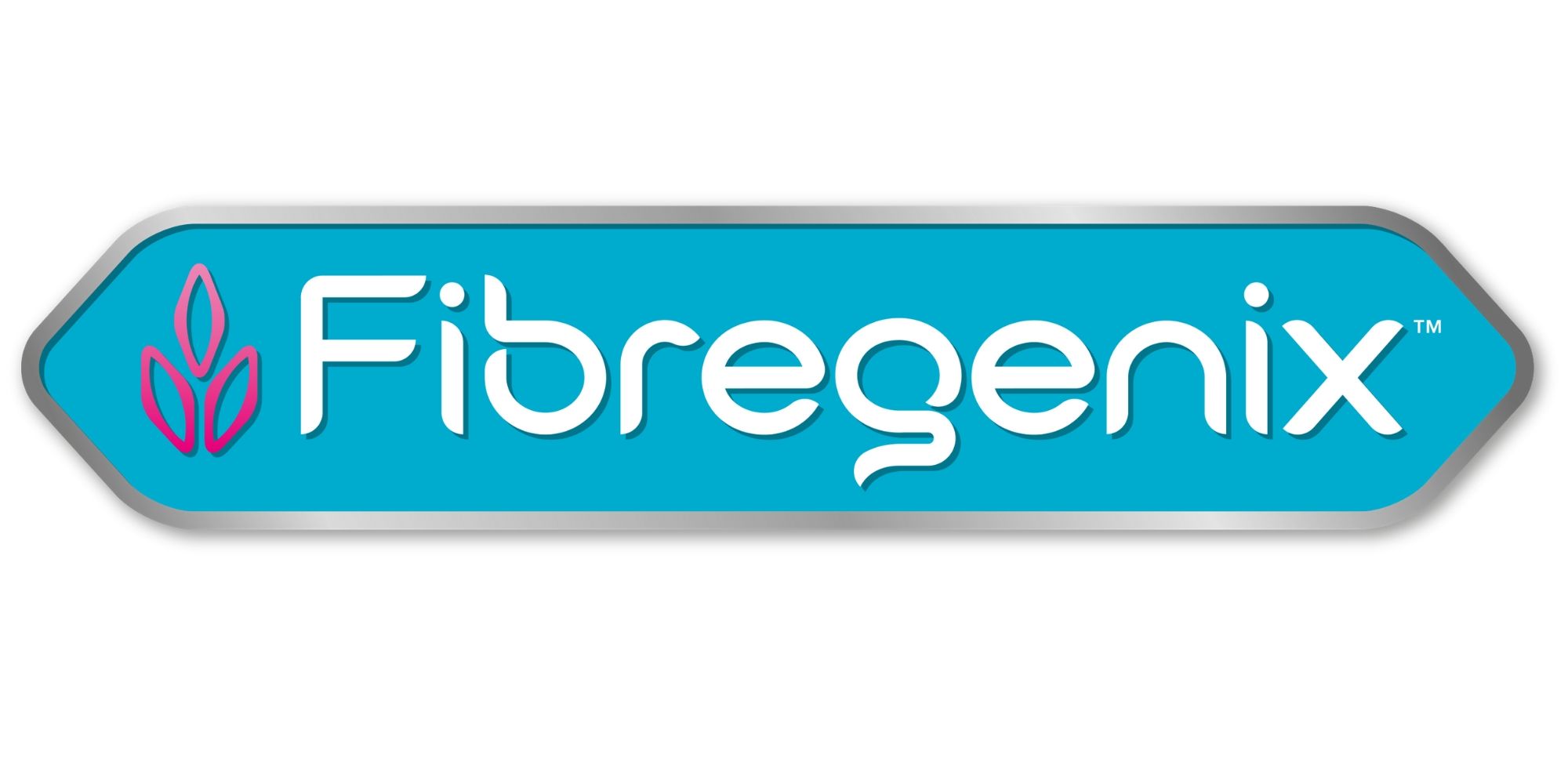
 Feed Allergies or Intolerances
Feed Allergies or Intolerances WHAT IS THE BEST WAY TO HELP A HORSE LOSE WEIGHT?
WHAT IS THE BEST WAY TO HELP A HORSE LOSE WEIGHT? 